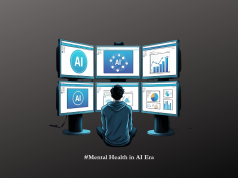As guardians of the public interest and stewards of taxpayer dollars, municipal government officials and employees operate under a unique set of pressures and ethical standards. Dutifully serving communities while navigating the intricate web of policies and bureaucracy can often weigh heavily on the minds of public servants. In this complex environment, the integration of mindfulness practices into the government workplace emerges as a beacon of hope for enhancing focus, decision-making, and stress management. But how does one balance the scales of productivity and wellbeing in the public sector?
First, let’s dissect the importance of mindfulness in the workplace. Mindfulness, defined as the quality of being present and fully engaged with whatever we’re doing at the moment, is not merely a buzzword. It’s a tool that’s been shown to reduce stress, improve concentration, and contribute to overall mental wellbeing. In the fast-paced world of government service, these benefits can translate to more thoughtful policymaking, enhanced public engagement, and a more resilient workforce.
However, the practical implementation of mindfulness practices within a government setting is not without its challenges. Concerns arise about the ethical implications of mandated wellness programs. Can a balance between voluntary participation and encouragement of best practices be achieved? To ensure that mindfulness training is both ethical and effective, it is vital to foster a culture of consent and personal choice, respecting the boundaries and beliefs of each individual.
There are shining examples of mindfulness initiatives that have woven their way into the fabric of governmental agencies with resounding success. Consider the case of a local health department that instituted ‘mindful Mondays,’ offering voluntary meditation sessions and stress reduction workshops. The results? Improved employee satisfaction, reduced absenteeism, and better service delivery to the community.
But it’s not just about one-off initiatives; it’s about creating a sustainable culture of wellbeing. This culture acknowledges the person behind the position, understands the stressors unique to public service, and provides tools to manage those pressures while maintaining high standards of productivity. Long-term benefits include a workforce that is not only healthier and happier but also more adept at serving the needs of its community.
In essence, mindfulness in the municipal government is not an oxymoron but a potential paradigm shift towards a more responsive, efficient, and mindful public service. By sharing practical strategies for mental resilience, we can empower our public servants to navigate the complexities of their roles with a clear mind and a strong sense of purpose.
In conclusion, the mindful municipality is an idea whose time has come. It’s about recognizing that the wellbeing of our public servants is inextricably linked to the wellbeing of our communities. By bridging the mindfulness divide, we can cultivate a government workforce that’s not only productive but also psychologically and emotionally equipped to handle the challenges of public service in the 21st century.
























